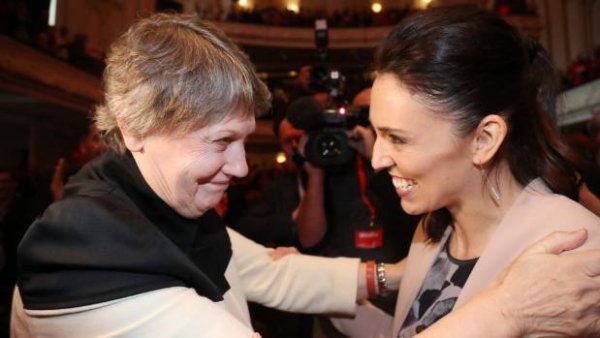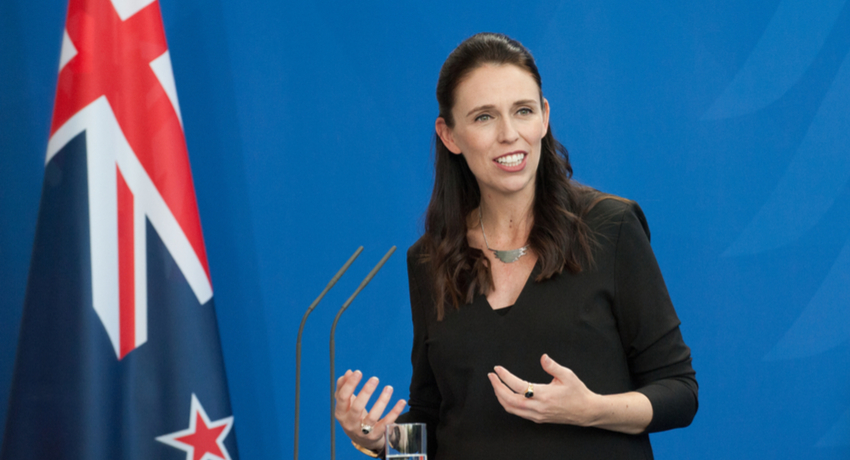In a televised debate during New Zealand’s 2017 election campaign, the National Prime Minister, Bill English, scoffed that the ‘stardust’ falling on his opponent, Jacinda Ardern, was settling. Ardern, who would shortly become the country’s third female PM, retorted that ‘This stardust won’t settle’.
This stardust won’t settle
In general, however, the campaign demonstrated much less misogynist terminology than in previous elections involving women leaders. After all, this was New Zealand’s fifth campaign involving a female major party leader. What does the New Zealand experience of the relationship between gender and political power at the very top tell us about women’s political careers?
Early in 2018 Ardern announced that she was pregnant with her first child. Jenny Shipley, New Zealand’s first female PM, was one of the first to congratulate Ardern. When asked about being PM and a mother at the same time, Shipley, who represented the National Party, said, ‘She can do both, and frankly it’s wonderful to see that we’ve got diversity in the parliament and a third woman Prime Minister who is young and still in her childbearing years’. Helen Clark, Labour, like Ardern, and the first elected female PM was also quick to send her congratulations.

Helen Clark and Jacinda Ardern
While Ardern’s trajectory was somewhat different than her two female predecessors, each woman demonstrated her capacity to take leadership opportunities when offered; each served a political apprenticeship: and each had courage and the willingness to take risks. All three combine a measure of ruthlessness with considerable interpersonal charm.
In 1997, Shipley became PM in similar circumstances to Julia Gillard by successfully challenging Jim Bolger, reigning National Party leader and PM since 1990. Bolger had formed a coalition with Winston Peters’ New Zealand First party after the first MMP election in 1996. Shipley lost the 1999 election to Labour’s Helen Clark, who, working with a range of coalition and support parties, was PM for three terms, resigning after losing the 2008 election.
Between 2008 and 2017 Labour had four male leaders, none of whom managed to win enough public support. Faced with adverse polls merely weeks before the 2017 election, the last of these gracefully resigned and caucus elected his deputy, Ardern, to the leadership position. She became PM after successfully negotiating the formation of a Labour-New Zealand First minority coalition government supported by the Green Party. Although National was the single largest parliamentary party, Bill English could not persuade Peters and his party, New Zealand First, to provide National with a working majority.
Each of the three women became PM after going through substantial political apprenticeships
Each of the three women became PM after going through substantial political apprenticeships. They had to prove themselves. Shipley, a primary school teacher who married a farmer, became involved in pre-school education and local government before winning a rural seat. Clark had a farming background, studied politics at university ending up with an MA and was active in the protest movements against the Vietnam and sporting contacts with South Africa and in Labour at every level of the party. Ardern had a small town background, did a BA (Communication Studies), worked in ministerial offices (including Clark’s) in Wellington, in Britain’s Cabinet and Home Offices and then became President of the International Union of Socialist Youth.
PM Shipley had ten years’ parliamentary experience behind her, including serving as minister in senior portfolios. Clark served 18 years before becoming PM. She had held ministerial office; had been Labour’s deputy PM; successfully challenged the incumbent leader to take the party leadership in 1996; and subsequently faced down a coup to replace her.

Dame Jenny Shipley, 36th Prime Minister of New Zealand. Image: New Zealand Ministry for Women
Ardern had nine years in Parliament, all in opposition, before becoming PM. In March 2017 she had become deputy leader after the incumbent, a senior woman, announced her impending retirement. Ardern took the leadership that August. She was 37 years old at the time; Shipley and Clark were 47 and 49 respectively.
Yet, however able, women PMs, unless catapulted into power through political inheritance as happens in more traditional polities, only get there because enough men expect that women are capable of political leadership, and enough women support their ambitions. Societal norms matter. Note, too, that these three PMs have had supportive partners, important for men as well as for women leaders. However, male partners of female PMs face more media criticism than vice versa.
The Labour PMs emerged from a party that was more sympathetic to taking active steps to advance women than did Shipley in National. But even Shipley, one of a handful of National women ministers at the time – and in that sense more in the Thatcher mould than her successors – could successfully claim political authority and legitimacy.
Of course there is also a strong element of myth in this story: in reality prejudice against women is present at every level of New Zealand society.
The success stories of women in positions of power in New Zealand fit with the predominant cultural belief in gender equality. This goes back to the strong first-wave women’s movement and early universal enfranchisement in 1893. Of course there is also a strong element of myth in this story: in reality prejudice against women is present at every level of New Zealand society. However, myths are important benchmarks for political performance.
The existence of other role models of powerful women also helps enhance the acceptability of women’s political leadership. During Clark’s tenure there was a second female Governor-General (now there’s a third), Chief Justice (still in office), Speaker of the House, and Cabinet Secretary. In Parliament at present National has a female deputy and the Greens have co-leaders, one man and one woman. And Ardern, although making history in a different way by being young and inexperienced insofar as governing experience is concerned, has had the role model of Labour’s previous, strong PM before her, before her parliamentary colleagues and before the voters.
Myth, cultural patterns, party expectations, and role models, all matter. And so does winning elections.




